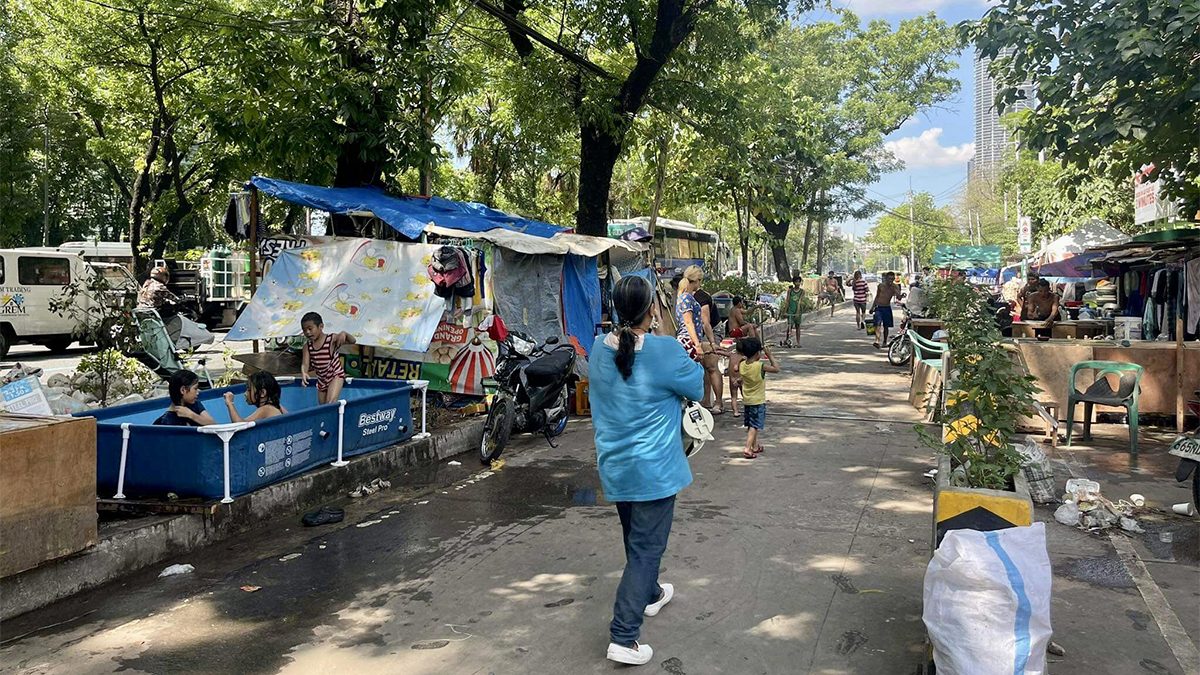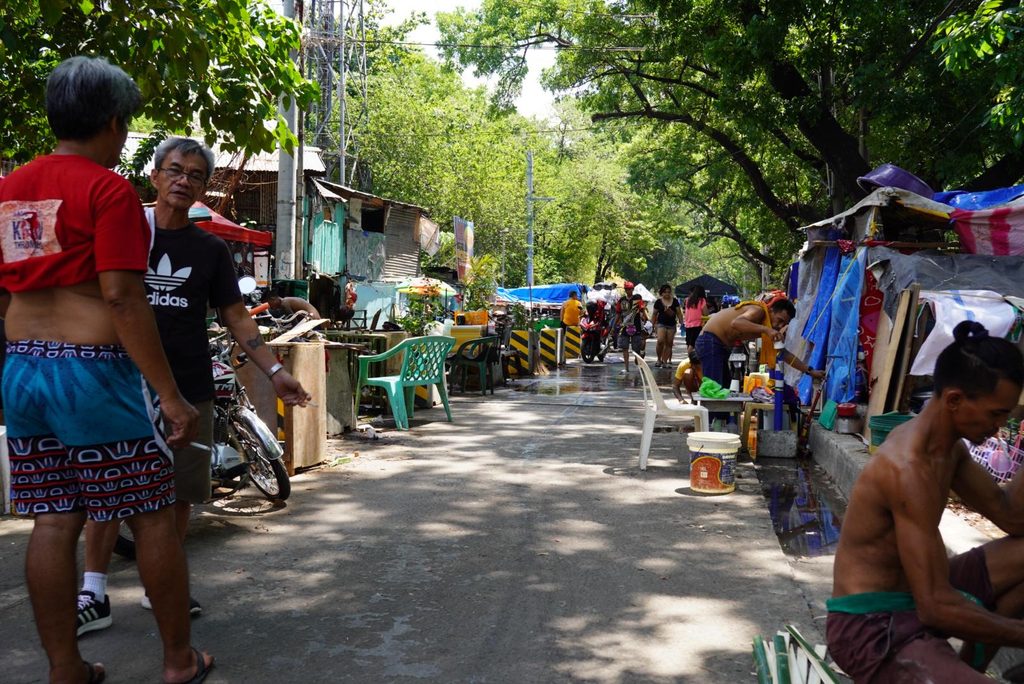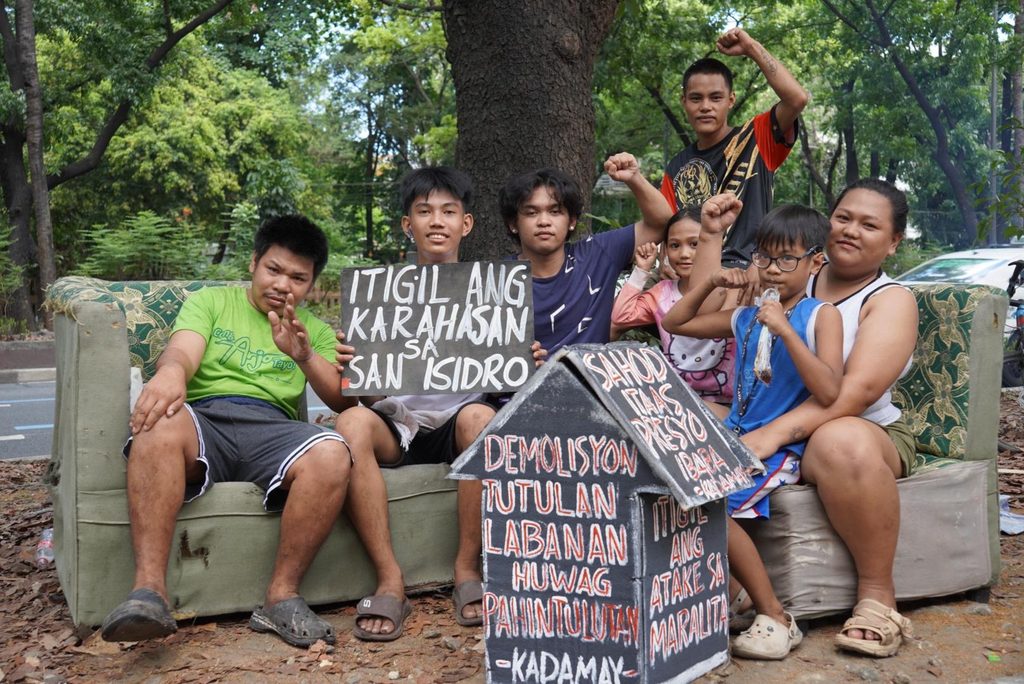SUMMARY
This is AI generated summarization, which may have errors. For context, always refer to the full article.

MANILA, Philippines — Displaced residents of Sitio San Isidro in Barangay Pag-asa, Quezon City are now living in poor conditions while they continue to seek justice and government relief following the demolition of their homes last April 18.
According to the Philippine Resource Center of Inclusive Development (Inklusibo), an estimated 50 to 80 families were affected to make way for a three-story cancer center and parking lot for the Philippine Children’s Medical Center (PCMC).

Teresita Dalayan, one of the residents, claimed that some of the families’ personal belongings were lost during the demolition, leaving them without any means of immediate relief. Meanwhile, Rose Dela Cruz said the Quezon City local government only visited the displaced residents to get their names, but have yet to provide updates.
With this uncertainty, families were appealing to agencies and volunteer organizations for aid. They have also been relying on meager donations just to get by. On top of this, they faced extreme heat and various illnesses such as diarrhea.
“Saan na kami matutulog? Saan na matutulog ‘yung mga bata? Magkakasakit ‘yan. Ilang pamilya po ang nandito, madami. Pa’no naman po kami lahat? Tignan niyo, saan sila tatae? Saan sila iigib ng tubig? Nagbabayad pa rin sila. Kailangan po nila ‘yun. Pa’no po kung umulan?” Dalayan said.
(Where do we sleep? Where do the children sleep? They will get sick. There are many families here. What will happen to them? What about sanitation needs? What about water supply? They still pay for water, electricity. They need that. What happens when it rains?”)
While they wait being relocated, the residents have set up temporary tarpaulin tents along a closed section of Quezon Avenue. However, members of the Quezon City LGU Task Force for Control, Prevention, and Removal of Illegal Structures and Squatting (TF COPRISS) and other traffic enforcers kept visiting the residents, asking them when would they leave the area as the road would be reopened to vehicular traffic.
Mismatch on initial notice
The displace families said they were unprepared for the demolition. Some claimed that the demolition came as a surprise.
Based on an April 9 letter to the Office of the Ombudsman uploaded by the Kanlipunan ng mga Damayang Mahihirap (KADAMAY) network, the PCMC had “closely coordinated” with local government units and the Philippine National Police to provide assistance when dealing with affected residents. The same letter had notified KADAMAY of the upcoming demolition.
However, this was not the case for some residents. They said they did not receive any document authorizing the demolition.
Dela Cruz, a resident of Sitio San Isidro for 22 years, was among those who pleaded to the authorities as they begun tearing down roofs and plywood off homes. She said her six-month old grandchild was still inside the house while the demolition was taking place. Her teenage son was asking if the demolition team carried an authorization letter.
“Binantaan po ‘yung anak ko. Wala pong pinakita kun’di ang agarang sabi [nila], ‘Sige, saan bang bahay mo? Akyatin na ‘yan. Sirain na ‘yan,’” she said.
(They threatened my son. They showed us nothing, they only said, ‘Where’s your house? We’ll tear the whole thing down.’)
A pregnant resident was also reported to have gone into premature labor due to shock and distress, and was rushed to the hospital.
Meanwhile, other residents said that the National Housing Authority (NHA) had informed them of the construction of the PCMC parking lot beforehand. Joasie Regasa, 44-year-old mother, said that those who volunteered to be relocated were only asked to complete and submit a signed form.
However, even the form was not properly communicated to residents. Dalayan said the NHA reportedly tried to pressure her child to sign the form while she and her husband were away. She was promised to be given a relocation priority as a homeowner but that has not happened. Such instances have left residents uncertain about the government’s assistance.
‘Humane demolition’
Despite the struggle faced by residents, TF COPRISS assistant department head Jojo Conejero denied that the demolition process they implemented was inhumane.
Conejero said it was one of their key measures to provide notices and host pre-demolition discussions with the residents to “ensure a humane demolition” and “guarantee due process for the affected.”
“As for the items that were not taken out in time by the residents, the QC Task Force simply put aside their belongings beside the subject area to proceed with the demolition,” he added.
Being a “no-build zone,” Sitio San Isidro is off-limits to residential properties because the low-lying area was prone to flooding. The area is also under government control for infrastructure developments.
Conejero cited a 2021 Memorandum Order authorizing the legal displacement of remaining informal settler families (ISFs) in Sitio San Isidro. LGUs may carry out demolitions after obtaining a Certificate of Compliance for Demolition by the Quezon City Local Housing Board, a Pre-Demolition Conference at the Presidential Commision on Urban Poor, as well as additional consultations with PCUP, the Commission on Human Rights, and the Local Inter-Agency Committee.
Since then, 230 out of 312 affected families have voluntarily relocated to NHA resettlement sites in Morong, Rizal; Pandi, Bulacan; and Norzagaray, Bulacan.
The QC Task Force said it was processing resettlement options for the 82 remaining families. In the meantime, a rental subsidy of P10,000 was provided for them by the city.
Rappler asked the NHA for its response to the claims of Sitio San Isidro residents. The NHA Office of the General Manager acknowledged receiving the questions on May 2, but has yet to respond.
Reassessing priorities
Despite government assurances, the dire situation of the displaced residents remained in limbo after three weeks.
Regasa criticized the LGU and NHA’s inefficiency and said that all the families should have been relocated first before the demolition began.
Organizers also believed that matters of resettlement do not address the core of the issues faced by urban poor communities like Sitio San Isidro. Inklusibo volunteer Janina, formerly with the Save San Roque Movement, emphasized that housing goes hand in hand with having a sustainable income and secure livelihood.

Doringo added that relocation efforts fall short when the relocation area fails to provide security and livelihoods for its residents, which are the leading causes why many of those previously relocated return to the Metro.
“Sana, bago talaga nilang mithiin ‘yung komunidad ng mga maralita para sa mga anumang sinasabi nilang kaunlaran o proyekto—pakinggan [nila] muna [‘yung mga residente], magkaroon ng diyalogo. Basta nakikita naman ng bawat pamilya na mas magiging maayos ang kalagayan nila sa paglilipatan sa kanila, sa tingin naman namin, walang tatanggi diyan,” Ka Mimi said.
(We hope that before the government initiates projects that could impact urban poor communities, they first prioritize dialogue with residents. If each family sees tangible benefits from the relocation, we believe none would reject the offer.)
The residents and organizers urge government agencies to reassess priorities and consider whom they serve. While they don’t oppose government projects, they demand fair procedures and the opportunity to voice concerns and needs in the path toward progress. – Adelainne Balbin & Mika Soria/Rappler.com
Adelainne Balbin is a Rappler intern from the Lyceum of the Philippines University Manila. She is currently in her fourth year in college taking up Bachelor of Arts in Journalism.
Mika Soria is a Rappler volunteer from the University of the Philippines Diliman. As a soon-to-be graduate from the Bachelor of Arts in Creative Writing program, they are interested in exploring writing in the field of journalism–most especially when it comes to stories centered on community and nation-building.
Add a comment
How does this make you feel?





There are no comments yet. Add your comment to start the conversation.